
SPRING THAW
After a prolonged period of bitter cold and snow,
the winter snapped suddenly on January 19. Bright, crisp sunshine poured over the Northern
Alsatian plain, the snow melting into rampaging waters. The Moder burst from its banks to
cover miles of the adjoining battlefield. Roads thawed into a quagmire and washed away
under Army use. T-Patchers waded in hip-deep water to attack over the flatlands to the
Rhine. Before Drusenheim could be won, boggy fields forced a halt.

| This lone "Minen" sign is the only warning of a
German minefield covered by flood waters of the Moder. |
|

| Trees were the only markers along flood-covered roads. |
|
| Engineers built miles of wooden platforms to make road
passable. |
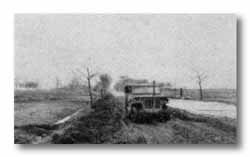 |
POCKET
CLEARED
| After four days of hard fighting, the Gambsheim
pocket ceased to exist. The 143rd’s well coordinated attack on Rohrwiller gained a
decisive advantage. With Herrlisheim and Offendorf threatened by encirclement, the Germans
were forced to pull out. From the Drusenheim woods, cleared by men of the 142nd and 143rd,
the enemy fell back into Drusenheim. Soft ground and flooded fields foiled the
143rd’s attack on Drusenheim, a bitter effort across open terrain. The 141st
outposted the Rhine River south of Drusenheim. Earlier the French had moved into
Gambsheim, original point of the German threat to Strasbourg. |
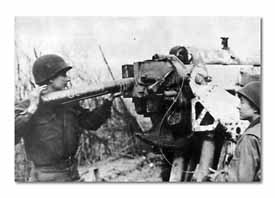
| A German 88 captured at Offendorf is turned across the Rhine.
Sgt. Albert R. Waldhuber loads shell. |
|
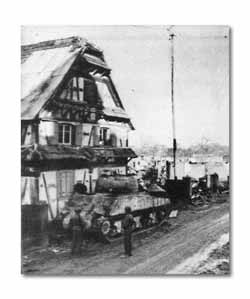
| An American tank captured earlier by the Germans at Herrlisheim
was abandoned when the enemy evacuated the town. |
|
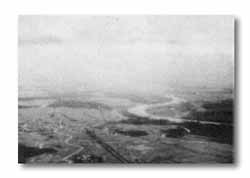
| At Drusenheim, on the Rhine, the Germans held fast. Our attacks
were discontinued. |
|
| The Division's fourteenth Congressional Medal of
Honor was awarded posthumously to T/Sgt. Morris S. Crane, who
was killed while performing his deed at Haguenau on March 13, 1945. |
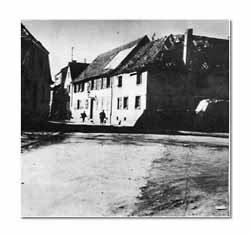 |
Infantrymen of the 143rd RCT stalk through the streets of
Haguenau in file. They are going on patrol. |
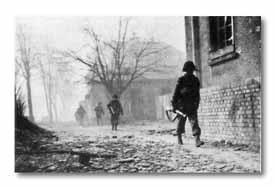
| Germans fought with drunken violence to prevent the Americans
from taking eleven battered houses across the Moder. |
|
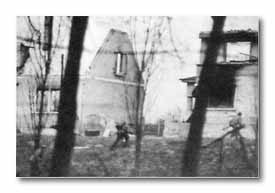 |
"C" Company's 2nd Platoon took eight of the houses,
lost five, and then regained all of them. |
| In Haguenau there was comparative quiet, but (above)
running civilians have heard the whizzing of an incoming shell. (Below) Captain
Alban E. Reid, Jr. (left) and Pfc. William C. Mech, I Company, 142nd, question
two women who are suspected of communicating with the Germans outside Schweighausen. |
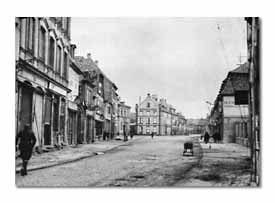 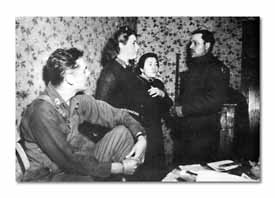 |
|











